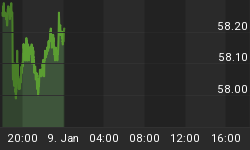One of the main purposes of my website, in addition to attempting to inform investors on a variety of issues, is to attempt to help investors benefit from our Model Portfolios. Our aim is for these Portfolios to do significantly better than average, without taking on an extra dose of risk. Our way of accomplishing this is by searching for generally outperforming funds in undervalued areas of the markets and by always trying to maintain a well-diversified portfolio.
How do I define "better than average?" I take the performance of indexes that are highly similar to our stock and bond portfolios and compare them to how our portfolios perform. Another way of measuring "average" is simply to use the average performance of all U.S. diversified stock funds, all International stock funds, and all taxable bond funds. Such data can be accessed in the Wall Street Journal at the end of each quarter.
While examining a just a single snapshot of our Model Portfolios can't be expected to definitively show the advantage afforded to investors who emulate them, we have been doing these kinds of comparisons every quarter, year after year, going back to 2000, that is, for 15 years or approximately 60 Model Stock Portfolios and 60 Model Bond Portfolios. Regular readers will likely be aware that our portfolios have an extremely strong record in coming out ahead of "average" when these comparisons are made. And this quarter's comparisons are no exception.
Here is a summary of the data from our stock and bond portfolios from 1, 3, and 5 years ago. You can find what these portfolios consisted of on our main web page by locating the April '14, '12, and '10 Newsletters. As always, the returns shown assume one holds our specific recommended funds, using the allocations we recommended, for the entire period from when presented up thru the end of the most recent quarter, in this case March 31, 2015.
Recent Model Stock Portfolios
| Model Stock Portfolio Performance vs. "Average" Performance | |||||
| After One Year | After Three Years | After Five Years | |||
| Total Return | 7.8% | 13.8% | 13.1% | ||
| Benchmark | 7.7 | 13.5 | 11.7 | ||
| Average Return of Our US Stock Fund Recommendations | 9.2 | 15.0 | 15.0 | ||
| Average Return of All US Stock Funds | 8.8 | 13.9 | 12.5 | ||
| Average Return of Our International Stock Fund Recommendations | 2.8 | 9.9 | 7.4 | ||
| Average Return of All International Stock Funds | -1.2 | 7.8 | 5.8 | ||
Note:
1. The benchmark for each Model Stock Portfolio consists of the sum of the returns from indexes of the total US market, international developed markets, and emerging markets in the proportion of 65, 30, and 5% respectively; results are annualized.
Recent Model Bond Portfolios
| Model Bond Portfolio Performance vs. "Average" Performance | |||||
| After One Year | After Three Years | After Five Years | |||
| Total Return | 5.1% | 4.2% | 4.7% | ||
| Benchmark | 5.7 | 3.1 | 4.4 | ||
| Average Return of Our Bond Fund Recommendations | 4.3 | 3.9 | 4.5 | ||
| Average Return of All Taxable US Bond Funds | 2.3 | 3.0 | 4.3 | ||
Notes:
1. The benchmark for each Model Bond Portfolio consists of the return from a total bond market index; results are annualized.
2. Our Model Bond Portfolio includes the 28% Fed bracket tax-equivalent return on our recommended muni bond fund.
These Results Warrant Careful Consideration of Our Model Portfolios
As can be seen, our recommended portfolios did better than either their benchmarks or the results compiled from the average returns of all existing funds in every comparison except for one. While not huge, we consider the Model Portfolio advantages shown in the two tables big enough to warrant careful consideration of our recommendations. Particularly as shown for stocks, the difference in performance of just a percent or two over a five years period amounts to a significant outperformance. It should be noted that in the past, our outperformances have over many periods been significantly larger.
As our research has shown many times before, the degree of outperformance of our Model Portfolios usually tends to be the greatest after several years elapse. This is consistent with the notion that our portfolios will produce the best results for investors who are patient and don't necessarily expect to come out ahead over short periods of time. This is another way of saying we are not at all trying to "time the market." Rather, we are trying to help investors avoid what we consider "well-played out funds" and investing themes, and focus instead on choices whose current relative undervaluation will likely result in bigger gains than average in the years ahead.
















